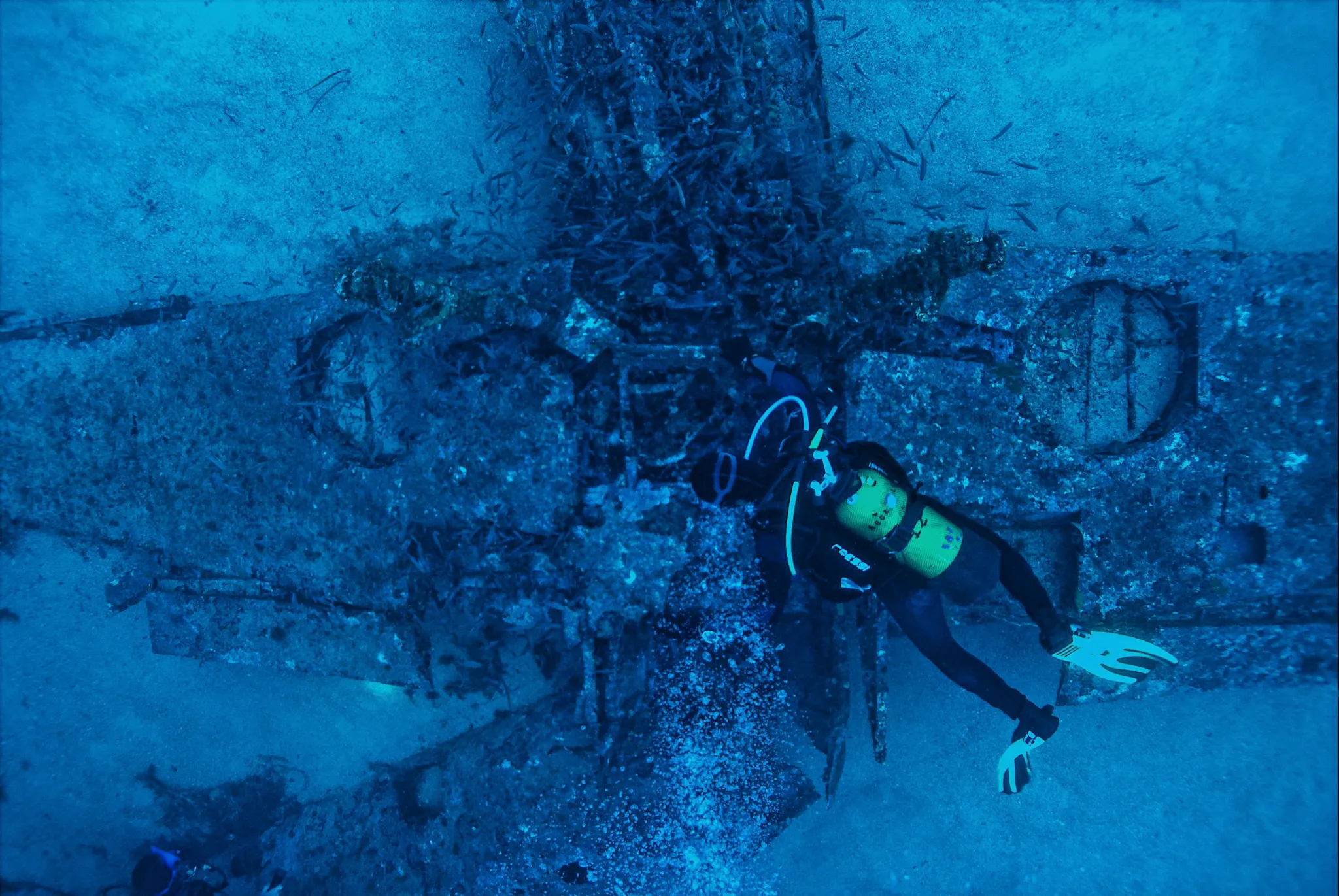Have you ever wondered what lies at the bottom of the ocean? The abyss has always captivated our collective imagination. From the deepest trenches to the most mysterious organisms, the abyss is home to countless secrets waiting to be uncovered. In this article, we will explore the meanings and discoveries of the abyss, delve into the anatomy of an abyssal environment, highlight the importance of the abyss and more. Get ready to dive deep and learn more about the fascinating world of the abyss.
Defining the Abyss and its Various Forms

The Abyss is a term that has been used for centuries to describe the unfathomable depths of the ocean. In its most basic form, the abyss is simply a term for a deep, dark, and often mysterious place that is difficult to explore and understand. However, as oceanographers, marine biologists, and other scientists have delved deeper into the study of the ocean, the term “the abyss” has evolved to become much more specific and nuanced.
The abyss can be divided into several different zones, each with its own unique characteristics. The first is the Sunlit Zone, which extends from the surface of the ocean down to about 200 meters. In this zone, light penetrates the water, allowing photosynthesis to occur, which supports a variety of plant and animal life.

The next zone is the Twilight Zone, which extends from 200 to 1,000 meters. Here, light is scarce, and the environment becomes increasingly dark and cold. While plant life is scarce in this zone, a variety of creatures, including bioluminescent fish and squid, can be found living in the darkness.
The last two zones, the Midnight Zone and the Abyssal Zone, are where the true abyss begins. These zones extend from 1,000 meters to the ocean floor, which can be as deep as 11 kilometers in some places. In these zones, light is virtually non-existent, and the pressure can reach over 1,000 times that of the surface. Despite these inhospitable conditions, a wide range of creatures thrive in the abyssal environment, including giant squids, anglerfish, and other mysterious and elusive deep-sea creatures.
One of the most famous abyssal zones is the Mariana Trench, located in the western Pacific Ocean. This trench is the deepest point on earth, with a depth of over 10,900 meters. It remains largely unexplored, and scientists are still learning about the unique and diverse ecosystem that exists in this dark and forbidding environment.
Overall, the abyss is a complex and mysterious environment that contains many secrets still waiting to be unlocked. As technology and research capabilities continue to improve, there is no doubt that new discoveries will continue to be made about the depths of the ocean and the creatures that call it home.
The Anatomy of an Abyssal Environment
The abyss is not just a term for the deep, dark, and mysterious underwater realm we know so little about. It refers to a specific environment with distinct characteristics that make it unique and challenging to study. In this section, we will delve deeper into the anatomy of the abyssal environment.
The abyssal zone is the deepest section of the ocean, typically below 3,000 meters (9,800 ft) where the water is cold, dark, and has a high level of pressure due to the weight of the water above. Life in the abyssal zone is sparse, with few organisms adapted to the extreme conditions. Most life consists of scavengers that feed on organic matter that sinks down from the surface.
The abyssal environment is dark because sunlight does not penetrate the deep water. Therefore, there is no photosynthesis occurring to nourish plant or algae life. The lack of light also has an impact on the animals that inhabit the abyss. Nearly all abyssal creatures are either translucent or black. Black provides a stealth advantage by blending in with the surrounding darkness, while the ability to be translucent makes it harder for predators to spot them.
The pressure at such great depths is immense, and the immense pressure affects everything in the environment from the way fluids behave to the structure of organisms themselves. As a result of the pressure, the bodies of creatures in the abyss are soft, and many do not have any bone structure. Instead, their bodies are comprised mostly of water, compressed until it is almost incompressible.
The abyssal environment is also distinct because of the types of geological structures that dominate the landscape. The most prominent features are oceanic trenches, long and narrow depressions in the ocean floor formed by the tectonic plates colliding that make up the Earth’s crust. The Mariana Trench is the deepest oceanic trench, and it extends about 2,550 kilometers (1,580 mi) from the coast of Japan to the Mariana Islands.

In conclusion, the abyssal environment is a remarkable and challenging place to study. The deep sea is cold, dark, and has an incredibly high pressure, making it a difficult place for life to thrive. However, the unique creatures that inhabit the abyss and the geological structures present have much to teach us about the ocean and the world.
Exploring Abyssal Zones and Trenches
Abyssal zones and trenches are some of the most mysterious and yet fascinating places on earth. They are deep regions of the ocean that are characterized by extreme darkness, pressure, and cold. In this section, we will explore the different types of abyssal zones and trenches, as well as their unique features.
-
Abyssal Zones
An abyssal zone is a deep region of the ocean floor that is typically situated between 3,000 and 6,000 meters below sea level. These zones are characterized by low temperatures, high pressure, and complete darkness, which makes it difficult for sunlight to penetrate through the water. Despite the seemingly hostile conditions, abyssal zones are home to a wide range of living creatures, including deep sea fauna such as sea cucumbers, crabs, and fish. -
Oceanic Trenches
Oceanic trenches are long, narrow depressions on the ocean floor that extend up to 11,000 meters below sea level. They are usually found in the Pacific Ocean, especially around the Pacific Ring of Fire, and are caused by the movement of tectonic plates. These trenches are home to some of the most fascinating and mysterious creatures on earth, such as giant squid, anglerfish, and sea cucumbers. -
Hadal Zones
The hadal zone is the deepest region of the ocean, which starts at a depth of around 6,000 meters and extends down to the deepest points of the ocean, such as the Mariana Trench. This zone is characterized by extreme conditions, such as high pressure, low temperatures, and complete darkness. Despite these challenges, scientists have discovered many fascinating creatures living in the hadal zone, such as amphipods, snailfish, and tube worms.
Exploring abyssal zones and trenches is not an easy task, and scientists have to use specialized equipment such as underwater submersibles and remotely operated vehicles (ROVs) to conduct research. However, the findings from these studies have revealed important information about the ocean’s biodiversity, geology, and ecology, which can help us better understand how the world works.
In conclusion, abyssal zones and trenches are some of the most fascinating and mysterious places on earth, and they offer a unique opportunity to explore some of the hidden treasures of the ocean. By studying these environments, scientists can learn more about the world we live in and the importance of preserving our oceans for future generations.
Strange and Mysterious Creatures of the Abyss
The depths of the ocean hold countless mysteries and wonders, and it’s no surprise that many strange and mysterious creatures call the abyss their home. The abyssal environment presents numerous challenges for survival, including darkness, pressure, and frigid temperatures. However, these conditions have allowed for the evolution of unique and fascinating creatures that have adapted to the abyssal environment in extraordinary ways.
One such creature that has captured the imaginations of oceanographers and the public alike is the giant squid. Often depicted as a terrifying sea monster in popular culture, the giant squid can grow up to 43 feet in length and has been known to attack submarines. In reality, giant squids are elusive creatures that prefer the deep sea and are rarely seen by humans. However, their presence in the abyssal zone demonstrates the incredible diversity of marine life in this area.
« The Language of Adam and Eve: Tracing the Origin of Human Communication
The Search for the Ark of the Covenant: Unraveling a Biblical Mystery »
Another enigmatic creature of the abyss is the dumbo octopus, named for its ear-like fins that resemble the ears of Disney’s beloved elephant character. These small, deep-sea octopuses are expert shapeshifters and have been known to balloon up their bodies to deter predators. Additionally, their unique fins allow them to hover over the ocean floor and search for food.
The abyssal environment also boasts a variety of bioluminescent creatures that produce light in the darkness of the deep sea. For example, the vampire squid has photophores along its body that glow red in order to confuse and deter any would-be attackers. The anglerfish also uses bioluminescence to attract prey, with a glowing lure that dangles from its forehead.
Lastly, the abyss is home to a variety of otherworldly creatures that seem like they have stepped out of a sci-fi movie. The tripod fish, for example, has elongated fins that allow it to stand upright and wait for any passing food. The transparent sea cucumber is a gelatinous creature that resembles something out of a horror movie.
The presence of such strange and mysterious creatures of the abyss highlights the need for continued exploration and research of this area. Not only do these creatures offer insight into the evolution of life on Earth, but they also have the potential to offer insights into medical and technological advancements. With new technology such as submersibles and ROVs, the future of deep sea exploration and discovery is promising.

In conclusion, the abyssal environment is home to an incredibly diverse range of strange and mysterious creatures that have adapted to survive the harsh conditions of the deep sea. Their otherworldly appearances and unique adaptations make them intriguing subjects for study and research. As we continue to explore and learn more about the abyssal environment, we are sure to discover even more fascinating and wondrous creatures that inhabit this deep and mysterious realm.
The Importance of the Abyss and its Research
The abyss, with all its mystery and intrigue, is not only interesting to explore, but also has important scientific value. Understanding the abyss and its unique environment can help us better understand the biodiversity of our planet, as well as provide insights into the technological and scientific challenges of exploring and surviving in extreme environments. In this section, we’ll delve into the importance of the abyss and its research.
-
Abyssal Environments: The Dark and Pressurized Realms
The abyss is a complex environment that poses challenges to researchers, particularly due to the remote and difficult-to-access oceanic trenches. It’s one of the least explored regions of our planet, and yet it provides insights into the extreme environments that exist on Earth. Research into the abyssal environment can help us understand the impact of climate change and human activity on marine ecosystems. -
Biodiversity and Biomedical Research
The abyssal environment is home to an amazing variety of marine life, including strange and mysterious creatures like giant squid and lantern fish. Studying these creatures and their behaviors can help us better understand marine ecology and the role of oceanography in conservation. Additionally, there is potential for biomedical research, as sea organisms have been found to have molecules with bioactive properties that can be used for medicine. -
Scientific and Technological Advancements
Exploring the abyss also helps us develop new technologies and tools for oceanography research. With new submersibles, ROVs, and other technologies, researchers can study the depths of the ocean like never before. The challenges of working in the abyss also shed light on the limits of technology and engineering, driving innovations that can be applied to other fields. -
Cultural and Historical Significance
The abyss has a rich cultural and historical significance as well. It has inspired myths and legends of sea monsters and mysterious creatures, and many cultures have incorporated the abyss into their beliefs and stories. Additionally, the abyss has served as a platform for human exploration, with pioneering expeditions and discoveries in oceanography, geology, and biology throughout history.
Overall, the abyss of the ocean has many important values, including scientific, technological, cultural, and historical significance. Its diverse and mysterious ecosystem is still being discovered and researched, and it holds potential for future discoveries and innovations.
The Future of Deep Sea Exploration
The oceans are vast and largely unexplored, with only a fraction of its depths having been seen by human eyes. Deep sea exploration is still in its infancy, but as technology advances, more doors are opening for scientists and researchers to discover the mysteries of the abyss.

One method of exploration is the use of submersibles, which are underwater vessels that can withstand extreme pressure and darkness. These vehicles can be operated by humans or remotely, using ROVs (remotely operated vehicles). With the help of advanced imaging technologies, submersibles can capture high-quality images of deep sea creatures and their environment.
Another method of exploration is the use of sensors and buoys that can gather data on the ocean’s conditions, such as temperature, salinity, and currents. These tools can provide information on the habits and movements of underwater creatures, as well as identifying areas of interest for further research.
Deep sea exploration has already revealed incredible discoveries, such as the Mariana Trench, the deepest part of the ocean which reaches depths of over 36,000 feet. Creatures living in this area are well adapted to the intense pressure and darkness of the abyssal environment and are unlike any known life on Earth.
The future of deep sea exploration holds immense possibilities for understanding not only the underwater ecosystems but also climate change and the history of our planet. Continued exploration and research into the abyssal environment can also inform the development of new technologies and materials that can withstand extreme pressure and darkness, which can be useful in a variety of industries.
As technology continues to improve, it is likely that more discoveries will be made in the deep sea environment. It is exciting to imagine what scientists and researchers will uncover in the years to come as they explore the uncharted depths of the ocean.


















